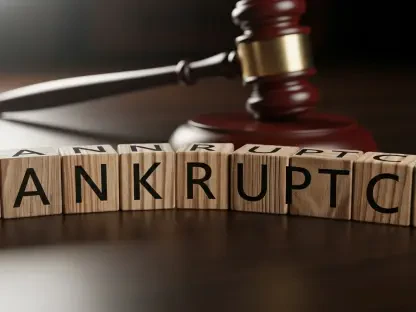Welcome to an insightful conversation with Desiree Sainthrope, a renowned legal expert with a deep background in drafting and analyzing trade agreements, and a recognized authority in global compliance. With her extensive knowledge of financial law and consumer protection, Desiree is the perfect person to help us unpack the recent Supreme Court ruling on motor finance claims. This ruling has sparked significant debate, touching on issues of unfair credit relationships, consumer rights, and the future of mass litigation in the car finance industry. In our discussion, we’ll explore what this decision means for everyday consumers, the challenges of pursuing claims, the impact on law firms, and the broader implications for transparency and fairness in financial services.
Can you walk us through the significance of the recent Supreme Court ruling on motor finance claims for everyday consumers who might feel they’ve been treated unfairly?
Absolutely, Mathilde. This ruling is a pivotal moment for consumers who’ve entered into motor finance agreements that may have unfair terms under the Consumer Credit Act of 1974. It specifically highlights the concept of an ‘unfair relationship’ between lender and borrower, as seen in the case that succeeded before the court. For many, this provides a legal pathway to challenge agreements where the cost of credit is disproportionately high—think of a scenario where the credit charge is over half the loan value. It’s a chance to seek redress, potentially recovering commissions or interest, and it signals that the courts are willing to scrutinize these deals closely when the terms seem exploitative.
How can consumers determine if their own motor finance agreement might fall under this ‘unfair relationship’ category?
That’s a great question. Consumers need to look at the specifics of their agreement—things like the total cost of credit compared to the loan amount, whether there were hidden commissions, and how transparent the lender was about the terms. The ruling emphasized factors like excessive charges as key indicators of unfairness. A practical first step is gathering all documentation related to the loan and consulting with a legal advisor who understands the Consumer Credit Act. However, it’s not always straightforward. Proving unfairness often requires showing how the terms disproportionately burdened the borrower, which can be a complex legal argument.
What are some of the hurdles consumers might face when trying to bring a claim based on this ruling?
There are several challenges. First, the ruling narrowed the scope of who can claim by rejecting certain legal theories, like implying fiduciary duties on car dealers. So, not every case of hidden commission or high interest will automatically qualify as unfair. Consumers also need detailed evidence of their agreement and the circumstances around it, which can be hard to obtain years after signing. Plus, there’s the emotional and financial toll of pursuing a legal claim—legal fees, time, and uncertainty can deter many. That’s why understanding the specifics of one’s case before jumping in is crucial.
There’s been talk that this ruling might actually limit the number of people who can bring claims. How do you see this affecting those who believed they had a strong case?
Indeed, the ruling has tightened the criteria for claims, particularly by dismissing broader arguments around fiduciary duties. For consumers who thought they had a case based on undisclosed commissions alone, this is disappointing news. Their path to compensation is now much narrower, and they’ll need to demonstrate a clear unfair relationship under the specific guidelines set by the court. This could leave many feeling let down, especially if they’ve already invested hope or resources into pursuing a claim, only to find their situation doesn’t meet the new threshold.
Some concerns have been raised about law firms that took on large numbers of these cases expecting a big payout. How do you think this ruling impacts their business strategies?
This ruling is a significant shake-up for law firms that built their models around mass claims in motor finance mis-selling. Firms that signed up clients en masse without thoroughly vetting the individual circumstances of each case might find themselves overextended. The decision forces them to pivot—focusing on quality over quantity, ensuring they only take on cases with strong evidence of unfair relationships. Some smaller or newer firms, especially those reliant on heavy funding to handle volume litigation, could face financial strain if expected windfalls don’t materialize.
The Financial Conduct Authority has suggested waiting for a redress scheme rather than signing with law firms right now. What’s your perspective on this advice for consumers?
The FCA’s guidance is worth considering seriously. A redress scheme could offer a more streamlined, less costly way for consumers to seek compensation without the risks or fees associated with private legal action. However, it’s not a one-size-fits-all solution. Schemes can take time to roll out, and they might not cover every individual’s unique situation as comprehensively as a tailored legal claim might. My advice would be to weigh the urgency of one’s financial situation against the potential benefits of waiting. If the harm is ongoing or severe, consulting with a trusted advisor sooner rather than later might still be necessary.
There’s a view that this ruling is a setback for consumer protection in the car finance industry. Do you share that sentiment, and why or why not?
I understand why some see it as a setback. The ruling missed an opportunity to broadly address systemic issues like lack of transparency in commission structures across the industry. By narrowing the legal grounds for claims, it potentially leaves some consumers vulnerable to practices that feel unfair but don’t meet the court’s strict criteria. That said, I wouldn’t call it a complete blow to consumer protection. The recognition of unfair relationships as a valid claim pathway is a win, and it keeps pressure on lenders to act more transparently. The fight for fairness isn’t over; it’s just taking a more defined shape.
Looking ahead, what is your forecast for the future of motor finance claims and consumer protection in this sector?
I think we’re at a turning point. While this ruling has limited mass litigation in the short term, it’s not the end of the story. Upcoming cases in the Court of Appeal and the FCA’s redress scheme will likely provide further clarity on how these claims are handled. I expect we’ll see a push for stronger regulatory oversight to prevent unfair practices before they happen, rather than relying solely on after-the-fact litigation. For consumers, awareness is growing, and that’s powerful. Lenders will face increasing scrutiny to ensure transparency, and I believe we’ll see a slow but steady shift toward fairer practices in the industry as a result.









